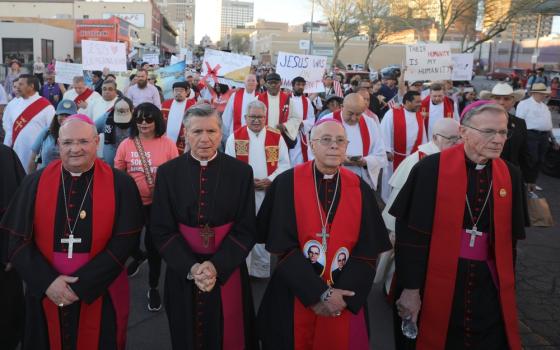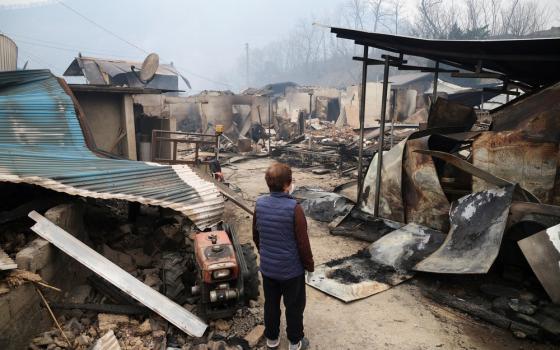Eric Sevareid began his career as a reporter for CBS Radio just as France buckled and fell to the lightning strike onslaught of the German armies in the fair spring of 1940. The country of so many remembered glories seemed in denial to the journalist who described the "unreality in it all." The professional classes displayed "a determined effort to retain ... a way and habit of life which the closing in of history was grinding away."
The ordinary people, however, felt what was happening and Sevareid was soon chronicling the hordes of families who strapped mattresses onto their cars and clogged the roads leading south out of Paris. These men and women, he observed, understood what was occurring but the generals never did. "The bearded old senators," he wrote, "sat three hours at lunch, as they had always done, chatting with their mistresses while their country was perishing."
Everywhere the official apparatus of government functioned as if nothing unusual had taken place. Petty officials insisted on carrying out routines that Sevareid compared to the spasms of the newly dead. Censors carefully examined the scripts -- the regulations must be obeyed - that he would broadcast from cities in which air raid sirens wailed and the building trembled from the bombing. Everyone would carry on as usual in this case study of a collapsing government living on the fumes of long gone glory. Still, its marshals and generals donned their uniforms and pinned on their sashes and medals to hold military reviews and to welcome the war correspondents with bands and receptions, a final costume party for men who reassured themselves by exercising the last fine grains of power in their finely gloved hands. Their new leader, Philippe Petain, was a white haired octogenarian who had been a hero a generation before at Verdun.
This parallels the activity that alternately astounds and enrages Catholics who understand what their bishop/generals do not -- that the hierarchical structures of the church are buckling under the lightning strikes of modern times. Ordinary people get this but many leaders continue to reassure themselves that nothing has changed and that the true way into the future is the one that leads back into a supposedly glorious past. They don their robes, pin on their sashes and perform liturgies, such as the operatic cappa magna all-in-Latin celebration of a lost world held at the National Shrine in Washington a few months ago. Their leader is a white haired octogenarian who had been a hero a generation before at Vatican II.
Sevareid describes standing in line "while an aged bureaucrat with walrus mustaches went through his accustomed motions and with painful slowness duly inscribed the pertinent facts with green ink in a soiled ledger." This incident symbolized what was happening. "The French bureaucracy, which was helping to strangle the country, never released its grip for an instant." The bureaucracy kept the country together long after the Germans had made an end run and a mockery of the Maginot Line whose fixed armor pill boxes were designed by men who did not understand the mobility of modern warfare.
So, too, the Vatican bureaucracy is the first and last line of defense for the hierarchical model of the church. It always made people stand in line, of course, for any permissions they sought and it treated with cobwebbed methods the assault of the sex abuse scandal on its badly breached defenses. It now deals with that, like the mustachioed bureaucrat peering at his ledger in 1940, unaware that by their passivity these bureaucrats are strangling the institutional church to death. Their careers, of course, depend on their not relaxing their grip for an instant.
They also sponsor investigations, as of the American nuns who built the church and get little credit for it. They issue new regulations that haphazardly pair child abuse with ordaining women priests. Now certain officials are planning to question the visionaries of Medjugorie about exactly what was in those messages from the Blessed Mother. All this is happening while victims of sex abuse still wait to be healed, the people look for some adequate response to the sacramental shortage and they are given a translation of the Mass and its readings that was dated when Napoleon was plotting to escape from Elba.
These behaviors are discouraging to good Catholics who do not want to leave their wobbling church the way the French abandoned Paris. They want to stay on as our poor bishops are ordered by Roman bureaucrats to prop up hierarchical structures at all costs. They need to encourage each other and good priests to remain calm even when a new and provocative edict is issued from the bureaucracy. Don't get involved even trying to refute these various commands. These documents are symptoms of the bureaucratic syndrome, the death rattle of every dying bureaucracy, the last crazed messages being sent out before the hierarchical model swallows its worker bees in the dust cloud of its final collapse.
Meanwhile, Vatican II Catholics may well follow the advice my psychiatrist wife and I give to healthy people when they are put upon by the unhealthy: Repeat at least twice a day, "I am not the one who is crazy here."
[Eugene Cullen Kennedy is emeritus professor of psychology at Loyola University, Chicago.]
The quotes from Eric Sevareid come from his 1985 book Not So Wild a Dream (University of Missouri Press).
Editor's Note: We can send you an e-mail alert every time Kennedy's column, Bulletins from the Human Side," is posted to NCRonline.org. Go to this page and follow directions: E-mail alert sign-up. If you already receive e-mail alerts from us, click on the "update my profile" button to add Kennedy to your list.




